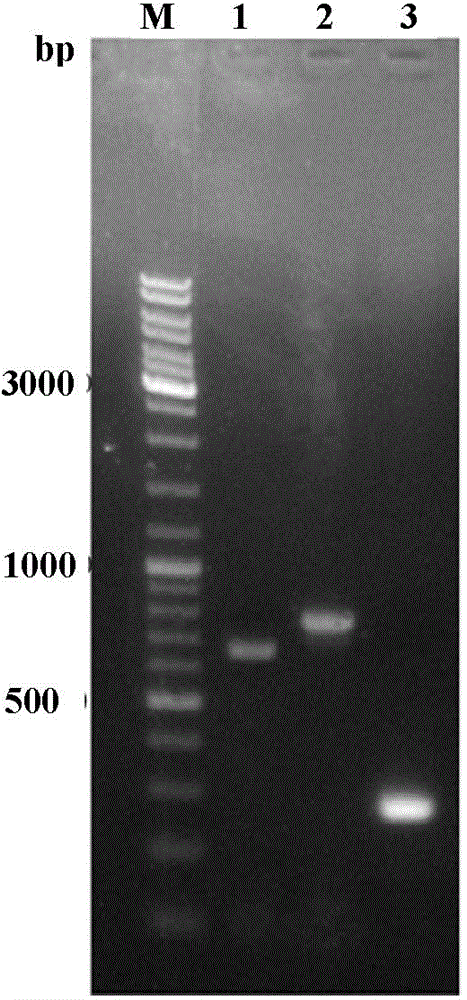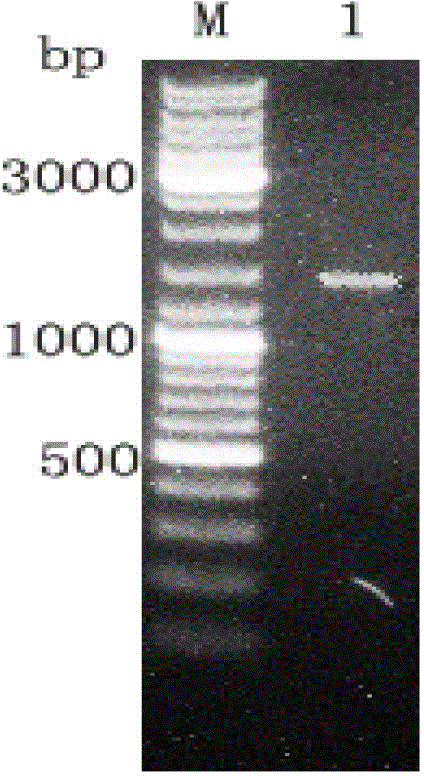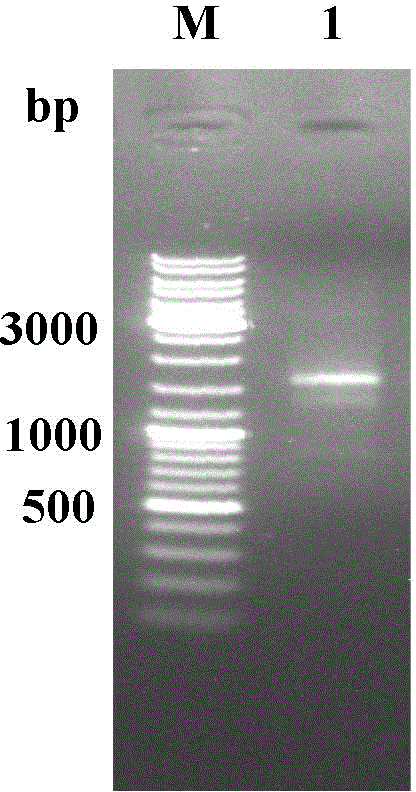Method for targeted knockout of non-essential genes for Bombyx mori nuclear polyhedrosis virus replication
A karyotype polyhedron and virus replication technology, applied in the field of DNA recombination technology and gene targeting, can solve problems such as troublesome virus screening, impact on virus function, missing target genes, etc.
- Summary
- Abstract
- Description
- Claims
- Application Information
AI Technical Summary
Problems solved by technology
Method used
Image
Examples
Embodiment 1
[0036] Example 1: Construction of transfer vector pUC19-IE1-EGFP-SV40polyA:
[0037] 1. The recombinant plasmid PSK-IE1-EGFP constructed by Gao Zhen et al. (Gao Zhen, Hong Yeting, Zhou Fang et al. Cloning, expression analysis and isolation and identification of the BmAGO1 gene of the silkworm [OL]. [2012-01 -09]. China Science and Technology Papers Online, http: / / www.paper.edu.cn / index.php / default / releasepaper / content / 201201-252) are designed as templates:
[0038] (IE-1)F:5-TTT GTC GAC AGTCGTTTGGTTGTTCACGATCG-3 (The bold italic part is Sal restriction site for I)
[0039] (IE-1)R: 5-CTCGCCCTTGCTCACCATGATTTGCAGTTCGGGACATAAAT-3
[0040] (EGFP)F: 5-TTATGTCCCGAACTGCAAATCATGGTGAGCAAGGGCGAG-3
[0041] (EGFP)R: 5-AATGTGGTATGGCTGATTATGATCTTACTTGTACAGCTCGTC-3
[0042] (SV40polyA) F: 5- CATGGACGAGCTGTACAAGTAAGATCATAATCAGCCATACC-3
[0043] (SV40polyA)R: 5-CGG GGTACC ATCCAGACATGATAAGATACATTG-3 (The bold italic part is KpnI enzyme cutting sites) (for the PCR results of the...
Embodiment 2
[0069] Example 2: Construction of recombinant transfer vector pUC19-lef7-IE1-EGFP-SV40polyA-gp64
[0070] Using the BmNPV viral genome (wherein, the viral DNA extraction kit was purchased from Sangon Bioengineering Co., Ltd.) as a template, the homologous sequences lef7 and gp64 were amplified, and the genes lef7 and gp64 were cloned into From the transfer vector pUC19-IE1-EGFP-SV40polyA, the recombinant transfer vector pUC19-lef7-IE1-EGFP-SV40polyA-gp64 was obtained.
[0071] Then, the recombinant transfer vector pUC19-lef7-IE1-EGFP-SV40polyA-gp64 was identified by PCR and double enzyme digestion, and the electrophoresis results are shown in Figure 5 , Image 6 , Figure 5 The identification results showed that the homologous sequence at one end of the target gene was cloned into the transfer vector pUC19-IE1-EGFP-SV40polyA, Image 6 The identification results showed that the homologous sequences at both ends of the target gene had been successfully cloned into the trans...
Embodiment 3
[0072] Embodiment 3: Extraction of BmNPV virus genome:
[0073] 1) Collect about 100ml of the cell fluid infected by the silkworm nuclear polyhedrosis baculovirus, freeze and thaw three times at -80°C and 37°C respectively, centrifuge at 12000rpm for 1h at 4°C, and take the supernatant;
[0074] 2) Centrifuge at 30,000 rpm for 1 hour at 4°C, discard the supernatant, collect virus particles, dissolve in 1 x TE, add 20 μL, 20 mg / ml proteinase K (purchased from Invitrogen), 20 μL, 10% SDS, 50°C Water bath overnight (at least 12h);
[0075] 3) Add 10 μL of 10mg / ml RNaseA (purchased from Beijing Dingguo Biotechnology Company), and bathe in water at 37°C for 1 hour;
[0076] 4) with phenol, chloroform extraction virus genome:
[0077] a. Gently mix with (equal volume) Tris-balanced phenol for 5 minutes, and centrifuge at 12000rpm for 10 minutes;
[0078] b. Extract again with phenol, chloroform and isoamyl alcohol with a volume ratio of 25:24:1 (the sum of the three volumes is th...
PUM
 Login to View More
Login to View More Abstract
Description
Claims
Application Information
 Login to View More
Login to View More - R&D
- Intellectual Property
- Life Sciences
- Materials
- Tech Scout
- Unparalleled Data Quality
- Higher Quality Content
- 60% Fewer Hallucinations
Browse by: Latest US Patents, China's latest patents, Technical Efficacy Thesaurus, Application Domain, Technology Topic, Popular Technical Reports.
© 2025 PatSnap. All rights reserved.Legal|Privacy policy|Modern Slavery Act Transparency Statement|Sitemap|About US| Contact US: help@patsnap.com



